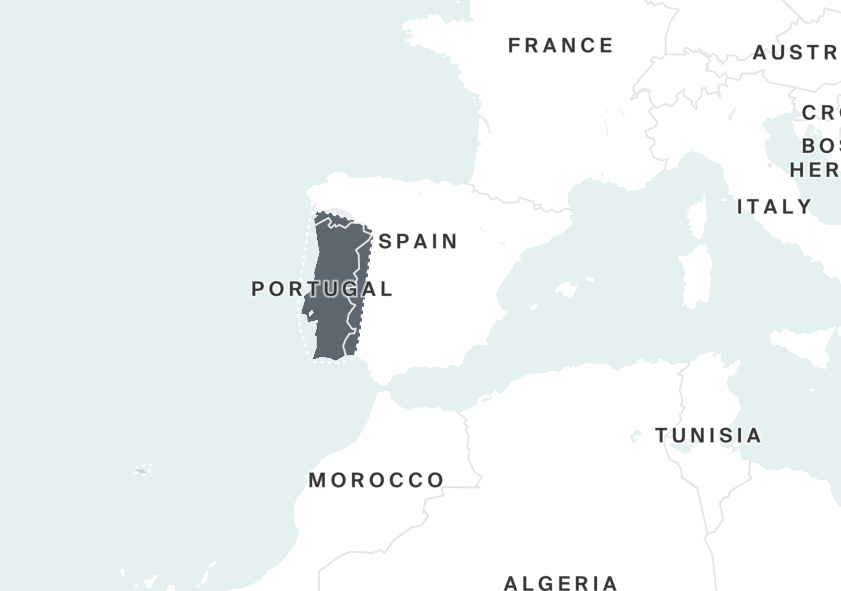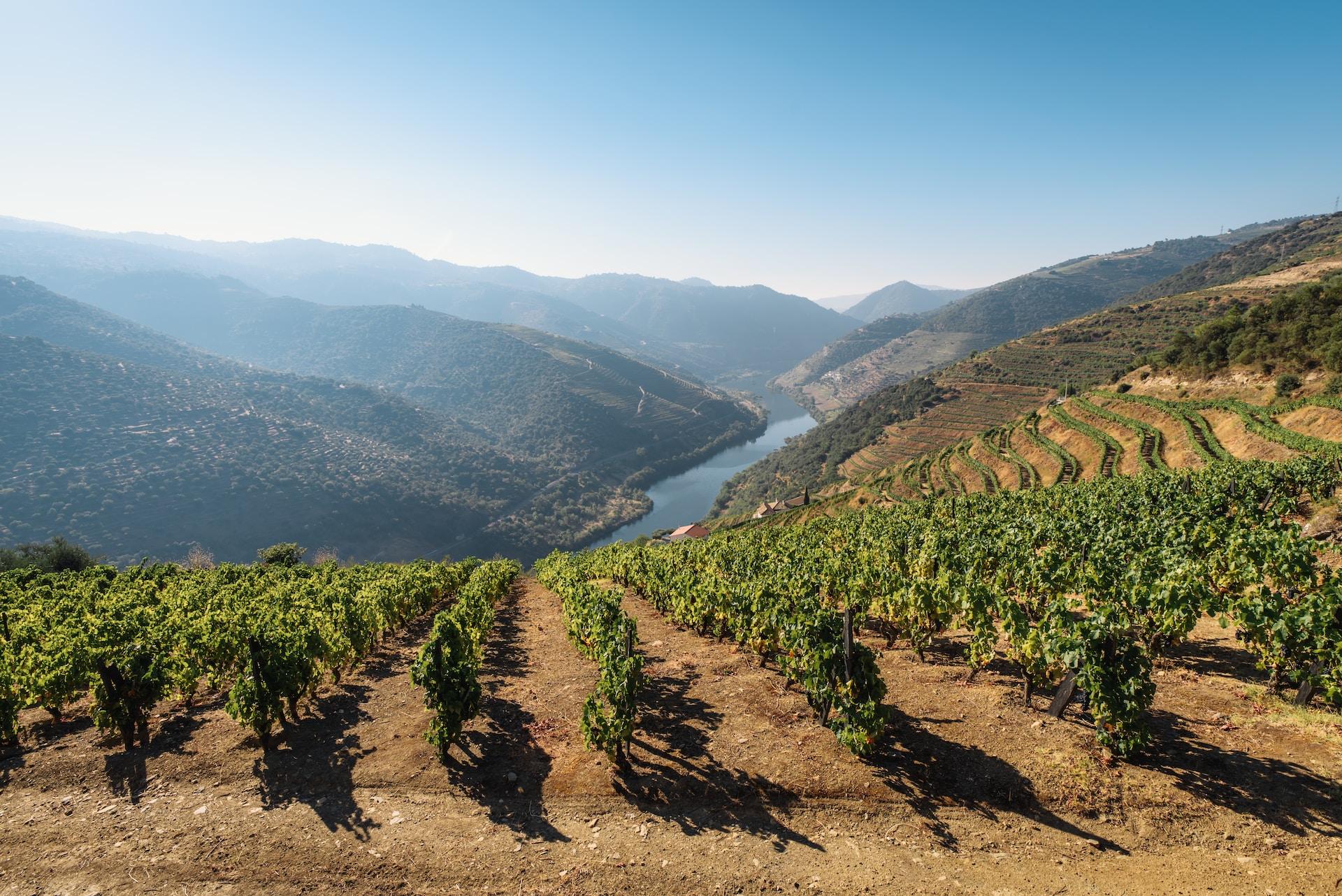What is Portugal DNA Ethnicity on Ancestry?
The results of our AncestryDNA tests may sometimes be what we expect or on occasion may be a big surprise. Either way, often we need a little more information regarding some of the regions that arise in our ethnicity estimates.

One region that is not at all uncommon is the Portugal DNA region. Those who still live in this region already understand all about its history and culture. There are others, however, who may never have even visited or in fact been aware that they have ancestors from that area.
In this post we will go into more detail with regards to the history, geography and culture of the Portugal region. We will also discuss what it means to be from this region and how easy or difficult it might be to trace our roots in the Portugal Region.
What Is the Portugal DNA Region?
The Portugal DNA region is located mainly on the western end of the Iberian Peninsula. It focuses mainly on the nation of Portugal, but it also includes a portion of Western Spain. The Portuguese DNA region does however also extend far beyond the shores of Portugal with notable populations found in the Azores islands of the Atlantic, northern Guyana in South America and the Hawaiian Islands of the Pacific.

Portugal DNA Region Subregions
There are 4 subregions to the Portugal DNA region of which three have several additional communities. This can be beneficial for researchers looking to trace where their most recent ancestors may have come from in this region.
Azores
The Azores subregion as the name suggests focuses on the Atlantic Ocean Island chain of the same name. Within this subregion there are 12 other communities which further define a potential origin for your Portugal region DNA. These are:
- Azores—Central Group
- Azores—Eastern Group
- Azores—Western Group
- Eastern São Miguel
- Faial
- Pico
- Santa Maria
- São Jorge
- South-Central São Miguel
- Southeast São Miguel
- Terceira
- Western São Miguel
Madeira
The Madeira subregion is located in South America focusing on the northern Guyana, northwest Venezuela and a string of Caribbean islands to the north. These islands include Trinidad & Tobago, Grenada, Barbados, Martinique and Antigua & Barbuda. This subregion has an additional four communities which include:
- Madeira Central & Guyana
- Madeira East & Kauai
- Madeira South & Guyana
- Madeira Southeast & Hawaii
Portugal
The Portugal subregion covers the region from which the other subregions will have originated. It focuses on the country of Portugal and regions of western Spain. There are 5 separate smaller communities in this subregion which include:
- Aveiro & Northern Littoral
- Aveiro-Viseu Region
- Central & Southern Portugal
- Northwest Portugal & Galicia
- Vila Real & Trás-os-Montes
Portuguese in Hawaii & California
The Portuguese in Hawaii & California region as the name might suggest focuses on the Hawaiian Islands of the Pacific Ocean. It does not have any subregions or communities of its own, however.
Portugal Region History
Early Humans
There is evidence of hominid presence on the Iberian Peninsula as far back as 300,000 years. Fossil records show the presence of Neanderthals, and other early modern human ancestors. Homo Sapiens first appeared in the fossil record of the region after 35,000 BC.
Protected somewhat from the last ice age the peninsula would have been a land of plenty for early human hunters and gatherers. Around 10,000 BC, however, as glaciers receded north, and sea levels rose the large game moved northward. This led to the inhabitants of the peninsula having to adapt and find new food sources.
The sea became an additional source of food for the peoples of the Iberian Peninsula in the form of shellfish. Over time life advanced and the peoples of the peninsula developed better tools and weapons to keep pace with the rest of Europe in its social development.
Prehistory
The earliest settlers of what we know as Portugal today were pre-Celtic groups. These would lead to tribes in the region such as the Gallaeci, Lusitanians, Celtici and Cynetes. Around 800 BC a group known as the Phoenicians arrived in the peninsula from a region in what is now modern-day Lebanon. These sailors had already settled along the North African coast founding several cities that still exist today.
Imperial Influences
The location of Portugal on the Iberian Peninsula made it, like its neighbor Spain, an area of interest for trade. This would draw the interest of empires such as the Carthaginians and the ancient Greeks. However, by 219 AD and until 298 AD it was the Romans who would take over the region. They would displace their rivals, the Carthaginians.

The Germanic Tribes
Around 500 AD when Roman control over Europe was waning the last military presence from Rome was pushed from the peninsula by the Germanic Visigoths. This barbarian tribe had been a thorn in Rome’s side for centuries and they established settlements in northern Spain.
The Basque region which is a unique cultural area of northern Spain and southern France marks the approximate area in which these Visigoths settled. A unique language is spoken in this region that has its roots in both Germanic and Iberian tribal linguistics.
This arrival of the Visigoths led to the rise of several kingdoms which for many centuries experienced internal conflicts. The level of unrest on the peninsula did not go unnoticed as Islamic leaders in neighboring North Africa took notice.
Islam on the Iberian Peninsula
In the year 711 AD, the conquest of the Iberian Peninsula began when Muslim forces took the island of Gibraltar. The campaign moved swiftly and by the time it ended much of the peninsula with the exception of some northern regions was under Muslim control.
As with Rome, the Muslim Empire extended itself too far and its control started to fall apart. Catholic kingdoms in the north of Spain took advantage and started to fight back against the Muslim forces. Eventually, the Muslim presence was driven from the peninsula but not before it made its mark on society and the people.
How Did You Get Portugal Region DNA?
If you already know that you had family who came from Portugal or any of the bordering states, then you know why you have Portugal region DNA. If this result came as a surprise, you may not know how exactly you came by DNA from this region.
If you have a sizable percentage of DNA from this region, then it is likely you have an ancestor who was born in or close to the country of Portugal.
Is the Result Accurate?
When it comes to ethnicity estimates, the higher the percentage you have from a certain region the more likely it is to be accurate. If your percentage is low, however, then it is harder to pinpoint exactly where your most recent ancestors came from.

A low result could mean a distant ancestor from that region. It is best to focus on your highest rated region's matches to determine where your ancestors came from more recently. A low percentage can often be hard to locate because the ancestor in question could be many generations back in your tree.
How to Research my Ancestry from These Regions
The results of a DNA ethnicity test are of course a great place to start, especially if there is an unexpected result found in the report. As always of course DNA cannot tell the whole story and we need to actually do the research work.
A percentage on an ethnicity estimate means very little unless you follow through and start building up your family tree. The relevant ancestors may be several generations back and it may take a lot of research to discover who they were.
If you have specific regions mentioned in your report, then you have a good idea of where your ancestor may have originated from. Ancestry DNA even has migratory information from some of these regions through to the final settlement places in the United States or elsewhere in the world.
Using Ancestry you may be able to determine not only who your ancestors were but where they are from in the region and perhaps the reason they decided to move.
Portuguese Migration
Azores
Although there are indications of human presence in the Azores Island chain in the form of carved underground structures, the bulk of the population in the region descends from the 15th century Portuguese colonization.
West Indies Region
The presence of DNA from the Portugal region in the West Indies and the South American mainland nations of Guyana and Venezuela is explained by two main waves of migration. The first would be indentured workers who were brought to Guyana between 1835 and 1882.
The second wave came in the form of trade in the West Indies. Portuguese traders were prolific in the region with vast numbers of traders coming from the Portuguese mainland town of Póvoa de Varzim.
Hawaii
It was again immigrant workers from the Portuguese island of Madeira that settled on the Hawaiian Islands. This would establish a presence of Portuguese DNA in Hawaii that persists to this day. The workers arrived in the late 19th and early 20th century and were working on sugar cane plantations.
Final Thoughts
Portugal is located on the western end of the Iberian Peninsula and like their neighbors the Spanish they developed into a major seafaring nation. During the golden age of discovery, the Portuguese spread around the world founding settlements in the Americas, Africa and Asia.
Today Portuguese DNA can be found in all of these regions meaning this relatively small nation has had a real global influence. Sharing a lot of commonalities with Spain the region has seen a similar history of foreign occupation but still maintained its own distinctive DNA.
Link To or Reference This Page
We spent a lot of time downloading, cleaning, merging, and formatting the data that is shown on the site.
If you found the data or information on this page useful in your research, please use the tool below to properly cite or reference Name Census as the source. We appreciate your support!
-
<a href="https://namecensus.com/blog/what-is-portugal-dna-ethnicity-on-ancestry/">What is Portugal DNA Ethnicity on Ancestry?</a>
-
"What is Portugal DNA Ethnicity on Ancestry?". NameCensus.com. Accessed on May 7, 2024. https://namecensus.com/blog/what-is-portugal-dna-ethnicity-on-ancestry/.
-
"What is Portugal DNA Ethnicity on Ancestry?". NameCensus.com, https://namecensus.com/blog/what-is-portugal-dna-ethnicity-on-ancestry/. Accessed 7 May, 2024
-
What is Portugal DNA Ethnicity on Ancestry?. NameCensus.com. Retrieved from https://namecensus.com/blog/what-is-portugal-dna-ethnicity-on-ancestry/.
